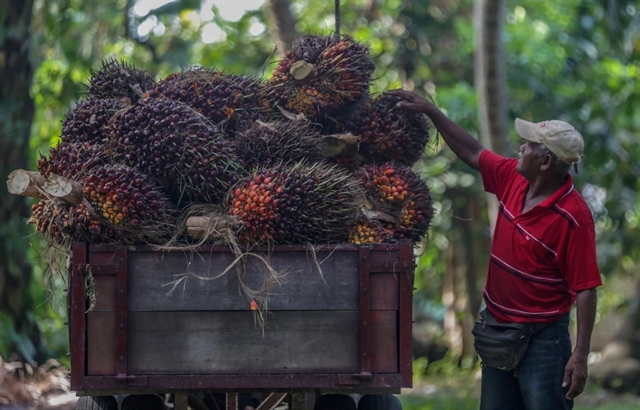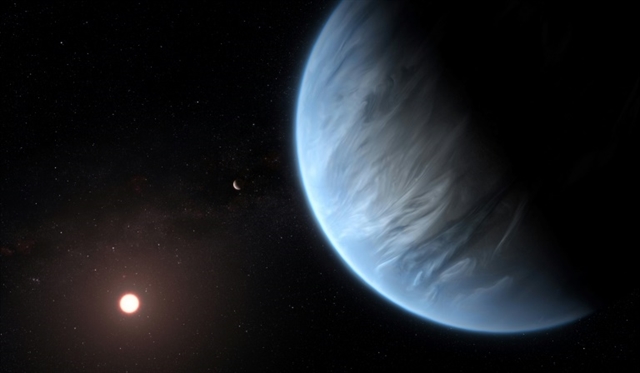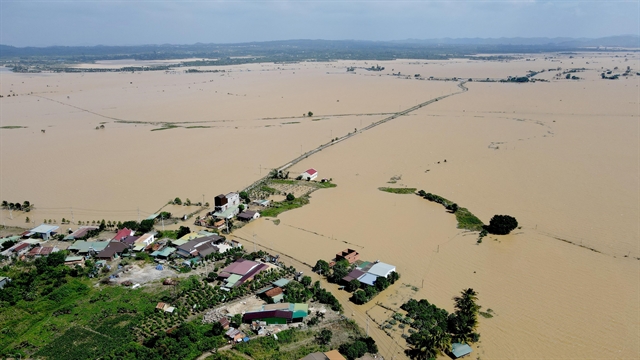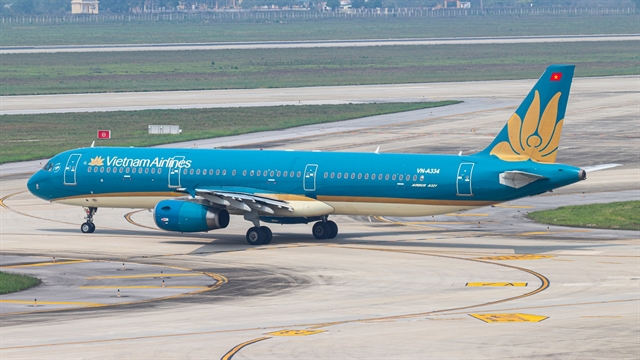 World
World


|
| A handout artist's impression released by ESA/Hubble shows the K2-18b super-Earth.— AFP/VNA Photo |
PARIS — Water has
Eight times the mass of Earth and twice as big, K2-18b orbits in its star's "habitable zone" at a distance - neither too far nor too close - where water can exist in liquid form, they reported in the journal Nature Astronomy.
"This
"We
Of the
Most exoplanets with atmospheres are giant balls of gas, and the handful of rocky planets for which data is available seem to have no atmosphere at
Even if they did, most Earth-like planets are too far from their stars to have liquid water or so close that any H2O has evaporated.
Discovered in 2015, K2-18b is one of hundreds of so-called "super-Earths"
"Finding
"K2-18b is not 'Earth 2.0'," he said. "However, it brings us closer to answering the fundamental question:
Working with spectroscopic data captured in 2016 and 2017 by the Hubble Space Telescope, Tsiaras and his team used open-source algorithms to analyse the starlight filtered through K2-18b's atmosphere.
They found the unmistakable signature of water vapour. Exactly how
By comparison, the percentage of water vapour in Earth's atmosphere varies between 0.2
There was also evidence of hydrogen and helium
Further research will
First of many
Water is crucial in the search for life, in part because it carries oxygen.
"
K2-18b orbits a red dwarf star about 110 light years distant
"It is likely that this is the first of many discoveries of potentially habitable planets," said UCL astronomer Ingo Waldmann, also a co-author.
"This is not only because super-Earths like K2-18b are the most common planets in our galaxy, but also because red dwarfs - stars smaller than our Sun - are the most common stars."
The new generation of space-based star gazing instruments led by the James Webb Space Telescope and the European Space Agency's ARIEL mission will
ARIEL, slated for a 2028 launch, will canvas some 1,000 planets, a large enough sampling to look for patterns and identify outliers.
"Over 4,000 exoplanets have




